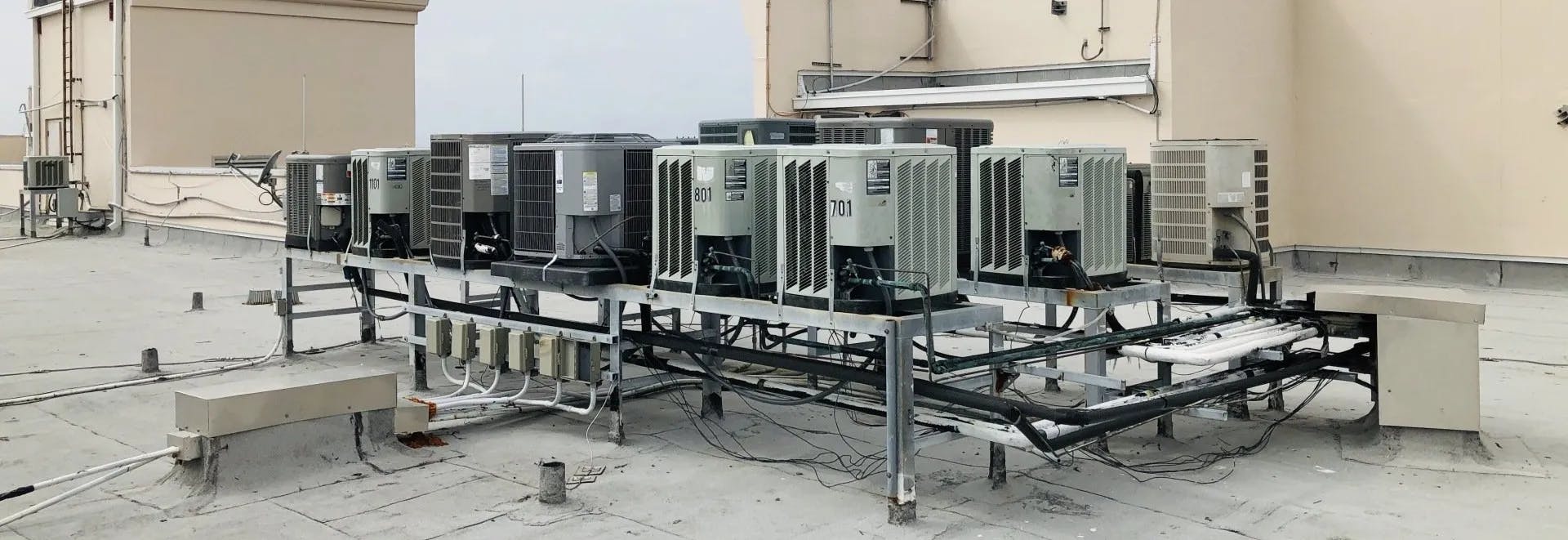Table Of Contents
- HVAC Peak Load And Load Modeling Tools
- What are External Loads?
- What are Internal Loads?
- Oversizing HVAC Systems
- Block Sizing
- Choosing System Sizes for Efficiency
- Load Modeling and HVAC Design
- How Can Engineers Use Tools to Communicate their Predictions with Owners?
- Automated Reports
- Helping You Save With Peak Load
Table Of Contents
- HVAC Peak Load And Load Modeling Tools
- What are External Loads?
- What are Internal Loads?
- Oversizing HVAC Systems
- Block Sizing
- Choosing System Sizes for Efficiency
- Load Modeling and HVAC Design
- How Can Engineers Use Tools to Communicate their Predictions with Owners?
- Automated Reports
- Helping You Save With Peak Load

Peak load: the absolute highest load for a room, system, or building, ignoring the time when individual gains and losses occur.
Why is peak load important to understand when designing a building’s HVAC (Heating, Ventilation, and Air Conditioning) system? Cost and efficiency.
The Department of Energy estimates that improperly sized HVAC systems can lose up to 30% of their overall efficiency, leading to wasted costs, unnecessary energy consumption, and an increase in carbon emissions.
Identifying peak load optimization strategies help architects, engineers, and contractors proactively mitigate costs while creating sustainable buildings for the future.
HVAC Peak Load And Load Modeling Tools
Peak load is often used to size room-level equipment like diffusers and fan coil units. It uses the "Sum-of-Peaks" sizing methodology and is readily used for constant volume systems, where the system must supply maximum value without variation.
The fan and coil sizes for the equipment are based on the sum of individual space loads or airflows and are referred to as non-coincident loads. Despite the ease of using Peak Load for system sizing, it is not recommended for sizing systems like AHU or Chillers because it will result in oversizing.
When designing a building's HVAC system, engineers must assess a building's capability to gain or lose heat. A building's capacity to gain or lose heat helps engineers identify HVAC equipment size, with the building's heat gains and losses characterized as either external or internal loads.
Cooling load calculations are typically the first to be assessed by the mechanical engineer since these calculations help determine adequate equipment sizes at the project's outset - a summation of the building's external and internal loads, which are impacted by its geometry, location, and use, in addition to other factors.
What are External Loads?
External loads come from various external factors, including solar radiation through windows and skylights and conduction through roofs and walls. Outside air brought into a building through the ventilation also contributes to a system's total load.
What are Internal Loads?
Internal loads are produced from heat generated inside the building or zone from people, lighting, and equipment such as computers, monitors, etc. Lighting and equipment loads are sensible heat, whereas the metabolic heat from a building's occupants includes both sensible and latent portions of load.
Oversizing HVAC Systems
Engineers will typically oversize a building's HVAC systems as a safety net when managing extreme periods beyond those assigned to the design conditions.
Often, the decision to oversize results from conservatively estimating the peak load or using an older "rule of thumb" which has not been checked against an actual load. A misestimate of the load leads to an increased cost of equipment, maintenance, and electricity.
Block Sizing
A "block" sizing methodology is commonly employed in mechanical engineering and for variable volume systems. Engineers use this method to assess the design load profiles and airflows specific to individual spaces within the zone or system to identify the collective maximum at any given time.
The most significant difference between "block" and "peak" sizing is determined by the building type and orientation. Engineers should consider peak sizing factors such as the sum of peak Cubic Feet Per Minute (CFM) within each space.
Engineers can base the "block" sizing on the peak load time for the entire building which will always be lower than the sum of room peaks. Depending on whether a building's system is sized based on "peak" or "block" load, engineers can expect to see its size reduced which allows for more efficient load time and, overall, cost savings.
Choosing System Sizes for Efficiency
In the project's design phase, the engineer evaluates and recommends components needed for the HVAC project. Sizes and loads are calculated to define the equipment used, and a layout is developed for the entirety of the proposed system. Schematics are also created to illustrate the equipment and system in greater detail.
The HVAC mechanical engineer oversees equipment installation to ensure the system is placed and connected according to the design plan. In addition, the engineer calls for performance tests to assess whether the new system is operating correctly and in accordance with regulations.
Sizing building HVAC systems requires high skill and technical expertise and engineers to navigate many variables to map out a building's expected heat profile and airflow. To evaluate proper system sizing, engineers must establish the precise design criteria used to determine the building's internal, external, base, and peak loads.
By mirroring HVAC equipment to actual loads, engineers reduce initial costs and operating costs associated with a building's system. Moreover, engineers can achieve increased energy savings by using right sizing to avoid the problems that arise from oversizing a system.
Load Modeling and HVAC Design
The greatest challenges associated with the HVAC design process come from understanding airflow, maintaining comfort level despite temperature changes, and identifying the energy needed to operate an efficient system.
Load modeling is a critical element in the design of HVAC systems and serves as a foundation for calculating a rate of energy in accordance with specified conditions for indoor environments. Specialized software lends itself to determining the optimal design of piping, ductwork, and heating/cooling components for a higher degree of confidence in the final product. The results from these tools offer better precision for sizing and improved HVAC cost optimization. Using these tools also streamlines workflow to fulfill tasks in an innovative and organized manner.
How Can Engineers Use Tools to Communicate their Predictions with Owners?
The design process for a building can be dynamic, and client expectations and communication are fundamental to the way engineers manage their project. Beyond wanting to ensure a building's comfort and efficiency, owners look to the skill and knowledge of the engineer to make recommendations.
Once a building's manager is made aware of ways to reduce HVAC inefficiencies, and the advantages of doing so, management can make informed decisions to improve the project outcomes.
Strategies to reduce HVAC systems costs, as well as minimizing energy and maintenance expenses, might include:
Increasing energy efficiency
Installing space-saving systems.
Utilizing a low-maintenance system
Using HVAC systems in conjunction with renewable energy sources.
Automated Reports
loadmodeling.tool allows engineers to calculate the daily space, system, and plant loads; it considers the evolving conditions throughout different months and seasons and allows users to generate automated reports using this data.
Automated reports serve as an essential tool to help bridge the communication gap between engineers and owners. Reports enable collaborators to see the breakdown of room-by-room cooling peak load and heating peak load and show the envelope gains and losses in Btu/h or % for your external loads (exterior walls, glazing, roofs, floors, etc.) and internal loads (people heat gain, lighting load from lighting systems, equipment load, etc.).
loadmodeling.tool also incorporates techniques recommended by the American Society of Heating, Refrigeration, and Air-Condition Engineers (ASHRAE), in accordance with ASHRAE Standard 183, "Peak Cooling and Heating Load Calculations in Buildings Except for Low-Rise Residential Buildings," under industry best practices to take minimize inefficiencies and maximize cost savings.
Helping You Save With Peak Load
Engineers and contractors employing the right building design platform from early schematic design to construction for HVAC systems see cost optimization through reduced energy usage and construction costs. These tools can help offer a big-picture view that allows engineers to determine where changes need to be made to benefit the system's long-term performance and goals.
Accurate peak load calculations help determine the amount of heat that must be continually removed or added to maintain the desired indoor temperature and ensure the right-sized system is chosen for maximum efficiency and comfort.
cove.tool helps engineers identify the optimal system for better results, reduces monthly utility bills, and allows HVAC professionals to diagnose large-scale issues that require repair or revision ahead of new unit installation. These calculations can save end-users money by reducing service calls or other expenses associated with maintenance.
Discover cove.tool for yourself!
